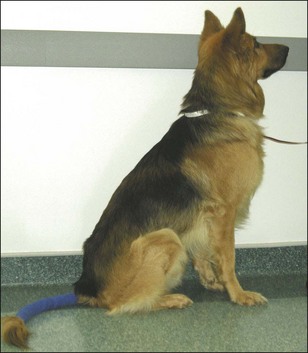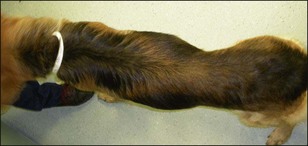38 Colorectal neoplasia in a dog
Initial presentation
Haematochezia, diarrhoea and faecal tenesmus
Signalment: 2-year-old entire male German shepherd dog, body weight 29 kg
Physical examination
The dog was bright, alert and responsive (Fig 38.1) although he was quite thin (body condition score 3/9) with muscle loss over the lumbar area (Fig 38.2). His mucous membranes were pink and moist with a capillary refill time of <2 seconds and hydration appeared adequate. No abnormalities were noted on thoracic auscultation. His heart rate was 82 beats per minute with good matched pulses and respiratory rate was 32 breaths per minute. Peripheral lymph nodes were normal in size. Due to the history of haematochezia, taking the rectal temperature was delayed until analgesia (e.g. topical lignocaine) could be used. When taken later it was 38.2° C.
Stay updated, free articles. Join our Telegram channel

Full access? Get Clinical Tree




